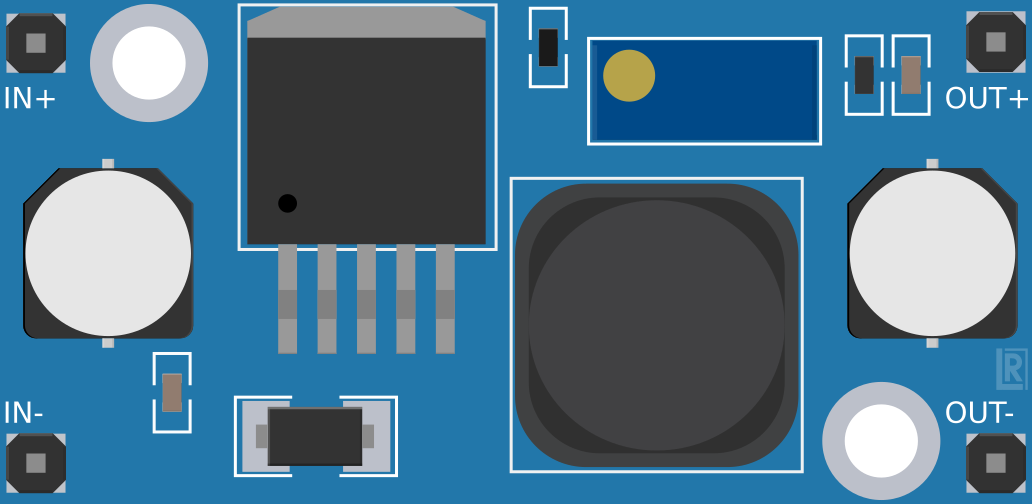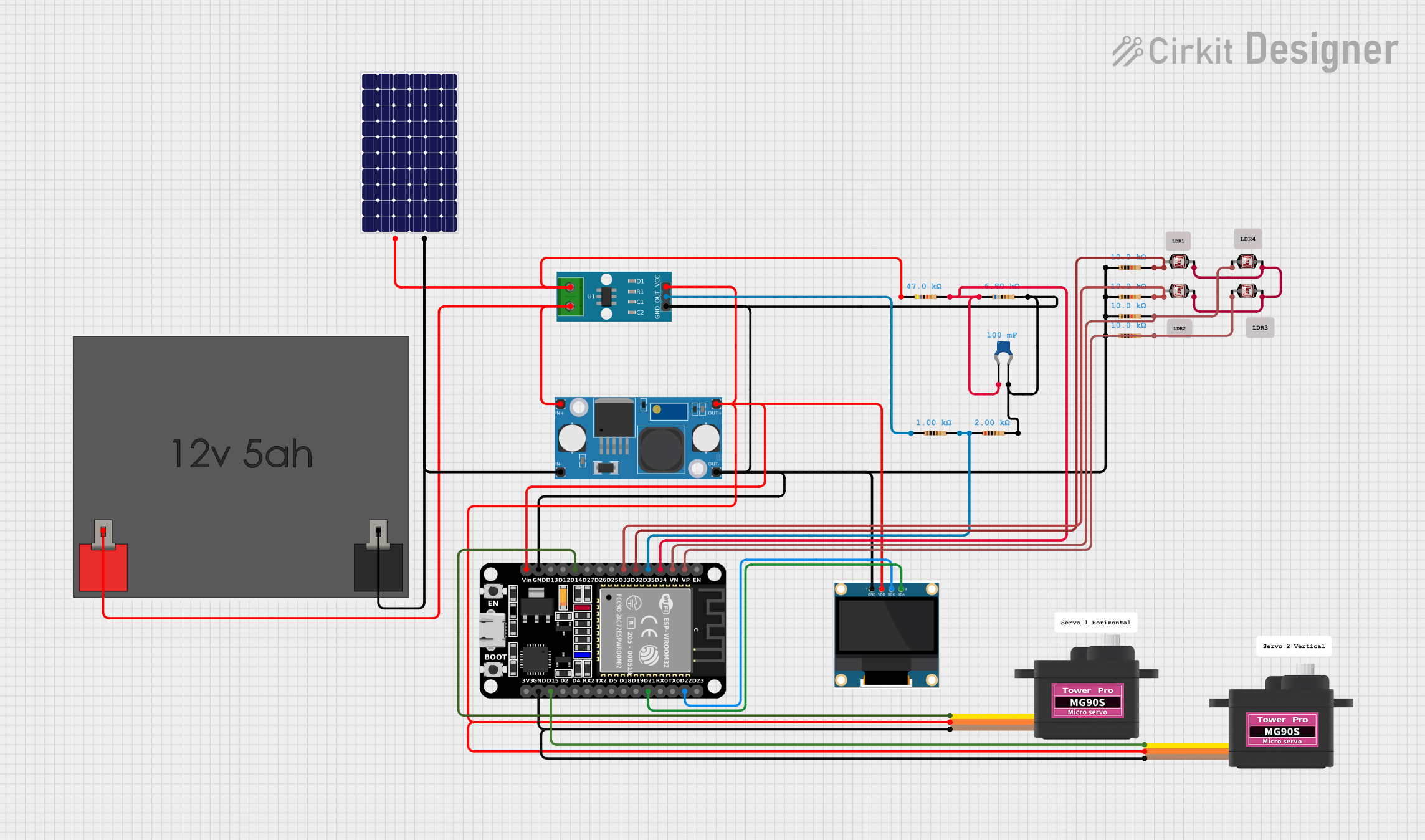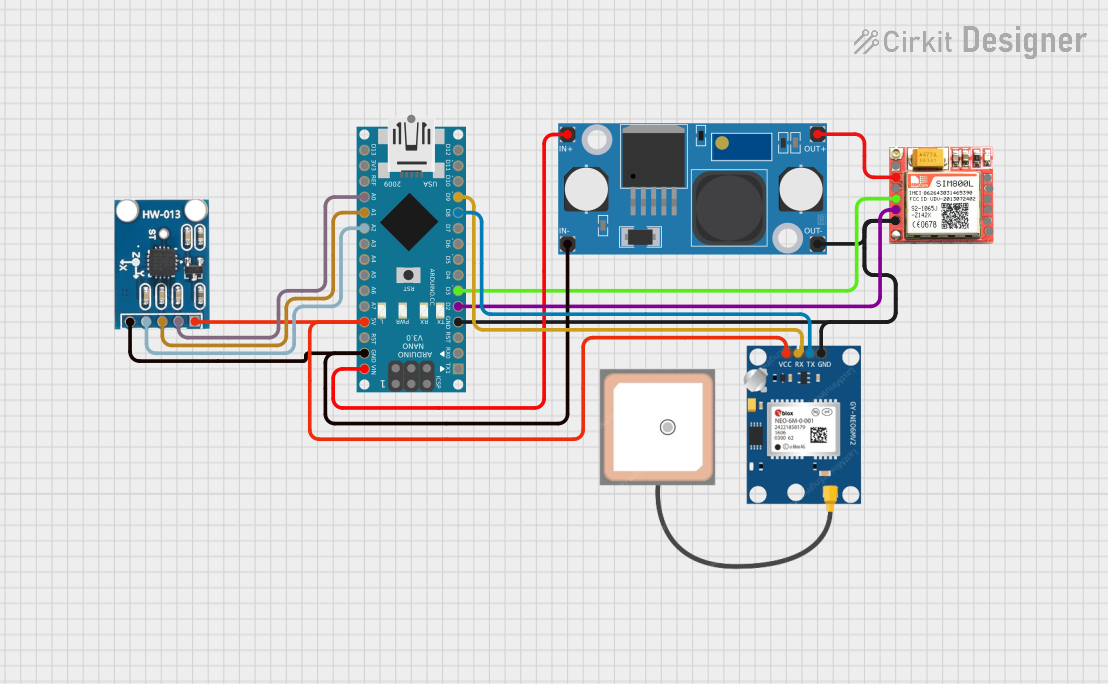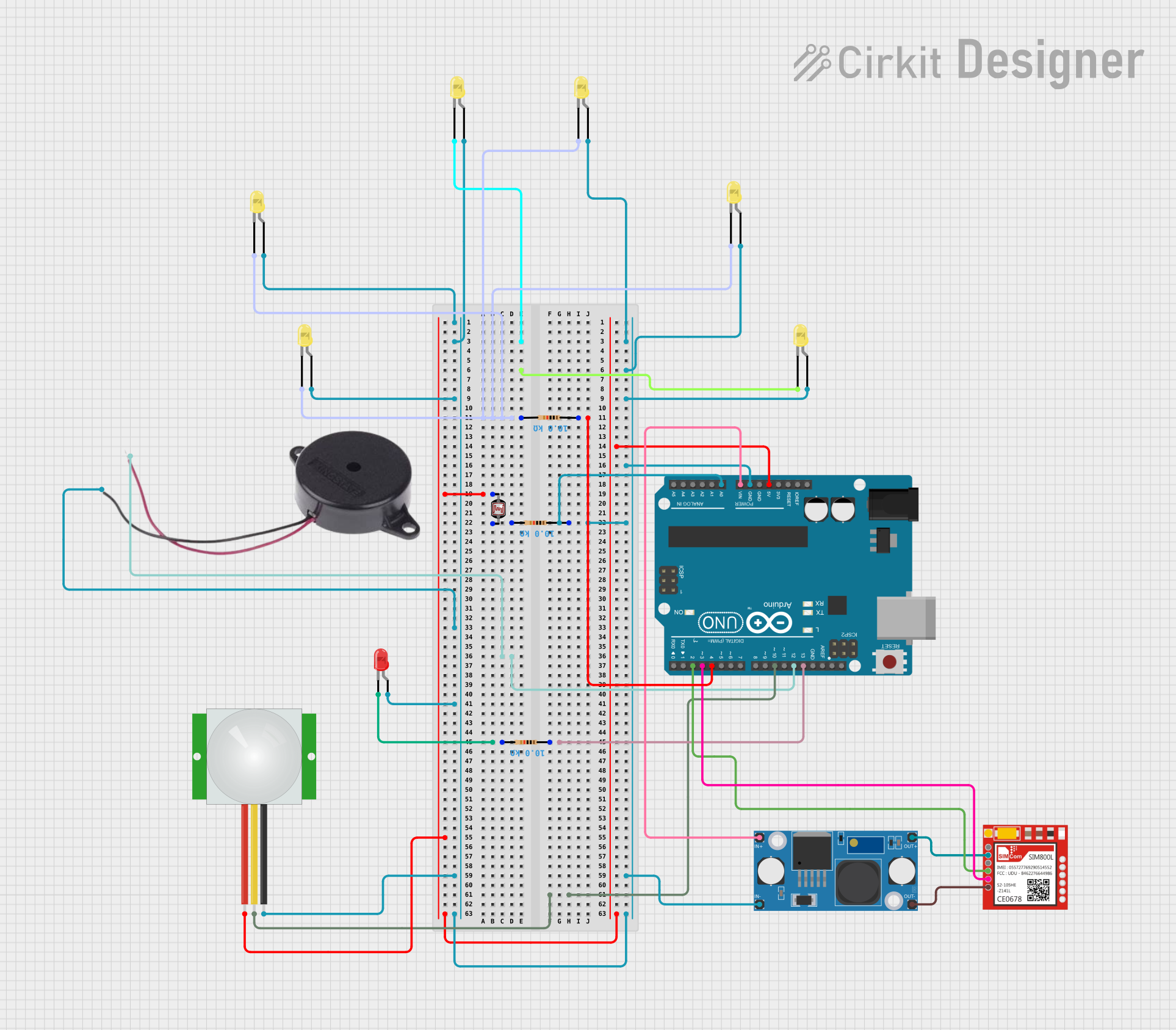
How to Use LM2596: Examples, Pinouts, and Specs

 Design with LM2596 in Cirkit Designer
Design with LM2596 in Cirkit DesignerIntroduction
The LM2596 is a step-down (buck) voltage regulator designed to efficiently convert a higher input voltage into a stable, regulated output voltage. It is capable of delivering up to 3A of output current, making it ideal for powering a wide range of electronic devices. With its wide input voltage range (4.5V to 40V) and adjustable or fixed output voltage options, the LM2596 is a versatile component for power management in various applications.
Explore Projects Built with LM2596

 Open Project in Cirkit Designer
Open Project in Cirkit Designer
 Open Project in Cirkit Designer
Open Project in Cirkit Designer
 Open Project in Cirkit Designer
Open Project in Cirkit Designer
 Open Project in Cirkit Designer
Open Project in Cirkit DesignerExplore Projects Built with LM2596

 Open Project in Cirkit Designer
Open Project in Cirkit Designer
 Open Project in Cirkit Designer
Open Project in Cirkit Designer
 Open Project in Cirkit Designer
Open Project in Cirkit Designer
 Open Project in Cirkit Designer
Open Project in Cirkit DesignerCommon Applications and Use Cases
- Power supply circuits for microcontrollers, sensors, and modules
- Battery-powered devices requiring efficient voltage regulation
- DC-DC converters in industrial and automotive systems
- LED drivers and portable electronics
- Voltage regulation in DIY electronics projects
Technical Specifications
The LM2596 is available in both adjustable and fixed output voltage versions. Below are the key technical details:
General Specifications
| Parameter | Value |
|---|---|
| Input Voltage Range | 4.5V to 40V |
| Output Voltage Range | 1.23V to 37V (adjustable) |
| Fixed Output Voltages | 3.3V, 5V, 12V |
| Maximum Output Current | 3A |
| Efficiency | Up to 90% |
| Switching Frequency | 150 kHz |
| Operating Temperature | -40°C to +125°C |
| Package Type | TO-220, TO-263 (D2PAK) |
Pin Configuration and Descriptions
The LM2596 typically comes in a 5-pin TO-220 or TO-263 package. Below is the pinout description:
| Pin Number | Pin Name | Description |
|---|---|---|
| 1 | VIN | Input voltage pin. Connect to the unregulated DC input voltage. |
| 2 | Output | Regulated output voltage pin. Connect to the load. |
| 3 | Ground | Ground pin. Connect to the circuit ground. |
| 4 | Feedback | Feedback pin. Used to set the output voltage (for adjustable versions). |
| 5 | ON/OFF | Enable pin. Pull low to disable the regulator; leave open or pull high to enable. |
Usage Instructions
How to Use the LM2596 in a Circuit
- Input Voltage: Connect the input voltage (4.5V to 40V) to the VIN pin. Ensure the input voltage is higher than the desired output voltage by at least 1.5V for proper regulation.
- Output Voltage: For fixed versions, the output voltage is pre-set (e.g., 5V). For adjustable versions, connect a resistor divider to the Feedback pin to set the desired output voltage.
- Capacitors: Place input and output capacitors close to the regulator to ensure stability and reduce noise. Typical values are:
- Input capacitor: 100 µF electrolytic
- Output capacitor: 220 µF electrolytic
- Inductor: Use an appropriate inductor value (e.g., 33 µH) based on the desired output voltage and current.
- Enable Pin: If using the ON/OFF pin, connect it to ground to disable the regulator or leave it open/pull high to enable it.
Example Circuit
Below is a basic circuit for an adjustable LM2596 regulator:
VIN (12V) ----+---- Input Capacitor (100 µF) ---- VIN (Pin 1)
|
+---- Inductor (33 µH) ---- Output (Pin 2) ---- VOUT
|
+---- Ground (Pin 3)
Arduino Example Code
The LM2596 can be used to power an Arduino UNO. Here's an example of how to monitor the output voltage using the Arduino's ADC:
// Define the analog pin connected to the LM2596 output
const int voltagePin = A0;
// Reference voltage for the ADC (5V for Arduino UNO)
const float referenceVoltage = 5.0;
// Voltage divider resistors (if used to scale down the LM2596 output voltage)
const float R1 = 10000.0; // Resistor connected to VOUT
const float R2 = 1000.0; // Resistor connected to ground
void setup() {
Serial.begin(9600); // Initialize serial communication
}
void loop() {
int adcValue = analogRead(voltagePin); // Read the ADC value
float voltage = (adcValue / 1023.0) * referenceVoltage; // Convert to voltage
// If a voltage divider is used, scale the voltage accordingly
voltage = voltage * ((R1 + R2) / R2);
// Print the measured voltage
Serial.print("Output Voltage: ");
Serial.print(voltage);
Serial.println(" V");
delay(1000); // Wait for 1 second before the next reading
}
Important Considerations and Best Practices
- Heat Dissipation: The LM2596 can generate heat under high current loads. Use a heatsink or ensure proper ventilation to prevent overheating.
- Input Voltage: Ensure the input voltage is within the specified range and sufficiently higher than the desired output voltage.
- Component Selection: Choose appropriate capacitors and inductors based on the output voltage and current requirements.
- PCB Layout: Minimize the trace lengths for the input and output connections to reduce noise and improve stability.
Troubleshooting and FAQs
Common Issues and Solutions
Output Voltage is Unstable or Noisy
- Ensure proper placement of input and output capacitors close to the regulator.
- Use low-ESR capacitors to improve stability.
- Check for loose connections or poor solder joints.
Regulator Overheating
- Verify that the input voltage is within the specified range.
- Use a heatsink or improve airflow around the regulator.
- Reduce the load current if it exceeds 3A.
No Output Voltage
- Check the ON/OFF pin. Ensure it is not pulled low.
- Verify the input voltage and connections.
- Inspect the feedback resistor network (for adjustable versions).
FAQs
Q: Can the LM2596 be used with a battery as the input source?
A: Yes, the LM2596 can be used with a battery as long as the input voltage is within the specified range (4.5V to 40V).
Q: What is the efficiency of the LM2596?
A: The LM2596 can achieve up to 90% efficiency, depending on the input voltage, output voltage, and load current.
Q: Can I use the LM2596 to power an Arduino UNO?
A: Yes, the LM2596 is suitable for powering an Arduino UNO. Ensure the output voltage is set to 5V and the input voltage is within the regulator's range.
Q: How do I calculate the output voltage for the adjustable version?
A: Use the formula:
[
V_{OUT} = V_{REF} \times \left(1 + \frac{R1}{R2}\right)
]
where ( V_{REF} ) is 1.23V, and ( R1 ) and ( R2 ) are the feedback resistors.
By following this documentation, you can effectively integrate the LM2596 into your projects and troubleshoot common issues.